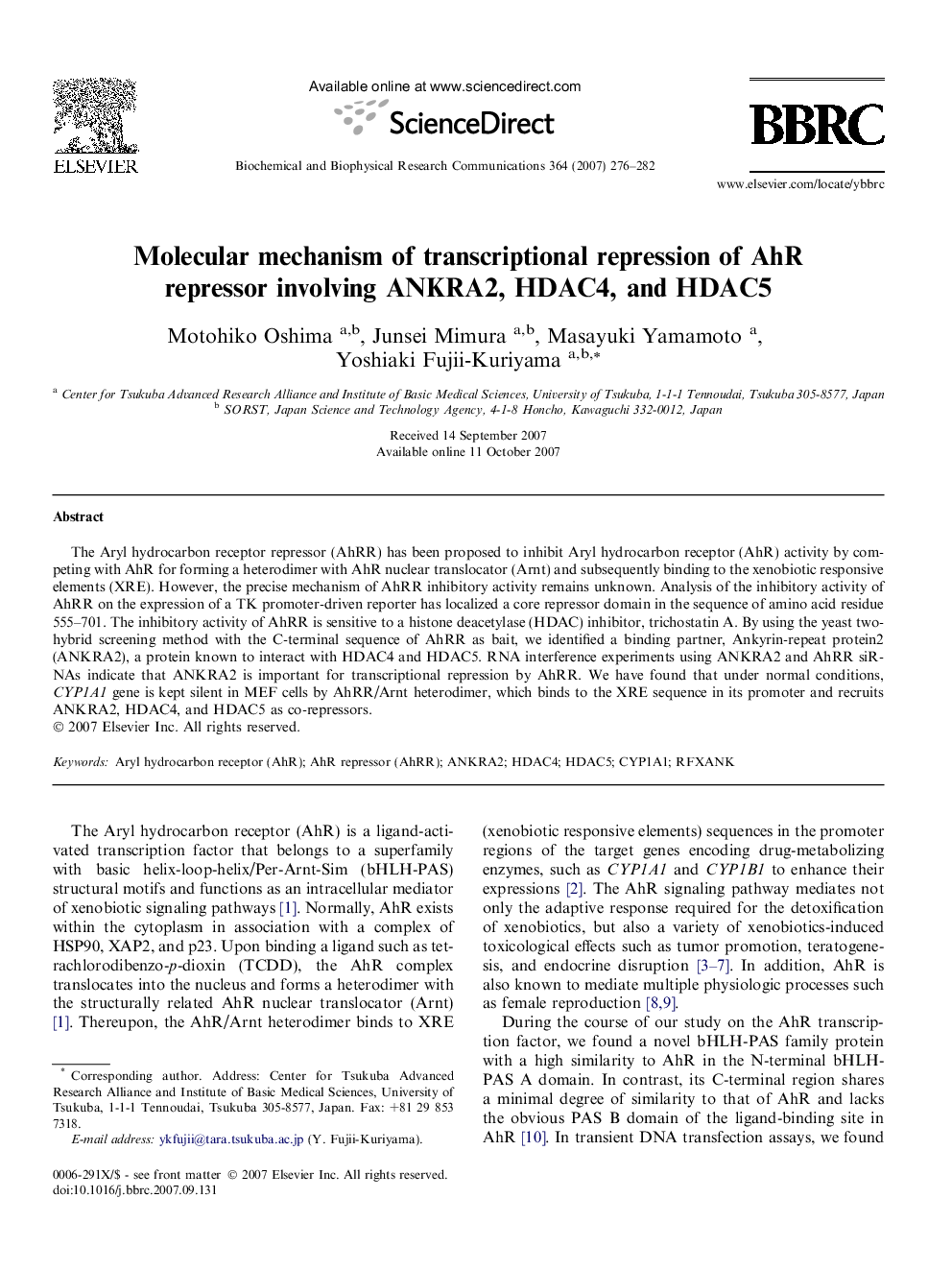| کد مقاله | کد نشریه | سال انتشار | مقاله انگلیسی | نسخه تمام متن |
|---|---|---|---|---|
| 1936062 | 1050682 | 2007 | 7 صفحه PDF | دانلود رایگان |

The Aryl hydrocarbon receptor repressor (AhRR) has been proposed to inhibit Aryl hydrocarbon receptor (AhR) activity by competing with AhR for forming a heterodimer with AhR nuclear translocator (Arnt) and subsequently binding to the xenobiotic responsive elements (XRE). However, the precise mechanism of AhRR inhibitory activity remains unknown. Analysis of the inhibitory activity of AhRR on the expression of a TK promoter-driven reporter has localized a core repressor domain in the sequence of amino acid residue 555–701. The inhibitory activity of AhRR is sensitive to a histone deacetylase (HDAC) inhibitor, trichostatin A. By using the yeast two-hybrid screening method with the C-terminal sequence of AhRR as bait, we identified a binding partner, Ankyrin-repeat protein2 (ANKRA2), a protein known to interact with HDAC4 and HDAC5. RNA interference experiments using ANKRA2 and AhRR siRNAs indicate that ANKRA2 is important for transcriptional repression by AhRR. We have found that under normal conditions, CYP1A1 gene is kept silent in MEF cells by AhRR/Arnt heterodimer, which binds to the XRE sequence in its promoter and recruits ANKRA2, HDAC4, and HDAC5 as co-repressors.
Journal: Biochemical and Biophysical Research Communications - Volume 364, Issue 2, 14 December 2007, Pages 276–282